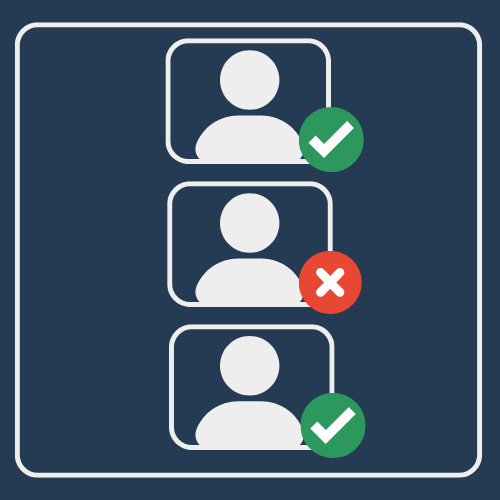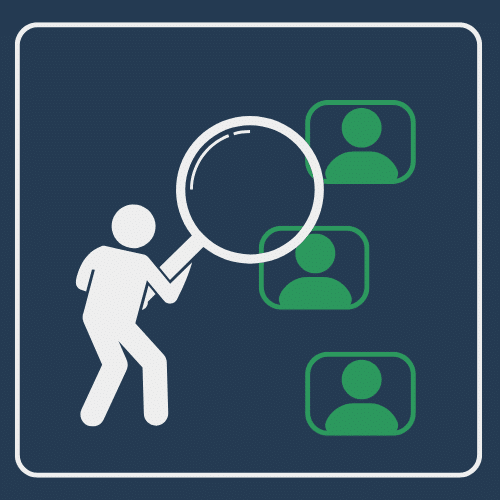SAP Business Technology Platform (BTP) expertise guide
SAP BTP centralizes data, integration, AI and low-code development. Find out how this SAP platform meets business challenges.
You are here : Home " SAP Guide " SAP Solutions "SAP BTP
For years, SAP was seen as a rigid monster.
A solid ERP, certainly, but difficult to adapt. Slow to evolve.
You wanted to connect a mobile app?
Create a business extension?
Use your data in an AI tool?
Good luck.
It was often a gas factory.
Except that the world has changed.
Companies need speed. Agility. Integration.
And SAP... had to adapt.
That's how SAP BTP was born:
the technological backbone for everything that goes beyond the classic ERP framework.
Introduction to SAP BTP
SAP BTP is like SAP finally opening its windows.
Breathing in the air of the cloud.
To offer a true platform for innovation, without sacrificing robustness.
But let's be clear:
SAP BTP is not a product. It's a promise.
The promise we can :
- connect SAP and non-SAP systems without friction,
- create applications without being a full-stack dev,
- manipulate data without a PhD in SQL,
- and activate artificial intelligence without going mad.
A sort of (secure) playground for developers, consultants, integrators...
And a nightmare for those who still think that SAP is "all about the back office".
What exactly is SAP BTP?
Officially, SAP defines BTP as a "unified platform for data management, application development, integration and analytics".
But in reality, it's simpler than that:
👉 You take all the technical layers that your ERP lacks to be flexible, modern and intelligent...
👉 You put them in a cloud platform...
👉 And you make it compatible with all hyperscalers (AWS, Azure, GCP).
This is SAP BTP.
Why did SAP create this platform?
Because everyone was tinkering.
Companies were spending their time creating apps alongside SAP, developing in-house integrations, managing third-party BI tools, maintaining unmanageable scripts...
It was slow, expensive, and above all... unstable.
BTP = unifying innovation without fragmenting the system.
Who uses it?
SAP BTP is not just for large groups.
More and more SMEs are using it to :
- make mobile apps for technicians,
- connect SAP to their CRM,
- automate recurring business processes,
- or generate predictive reports.
And what about users?
Consultants, developers, data analysts, integrators...
In short, anyone who needs to do more with SAP, without redoing everything.
Main components of SAP BTP
You've got it: SAP BTP is a platform.
But like any platform, it's worth nothing without its functional bricks.
So, before you rush headlong into tutorials and certifications,
we need to understand what this toolbox really contains.
Spoiler: there's more than just cloud.
1. Database and data management
💡 Data is the raw material. SAP BTP is the refinery.
At the heart of BTP, you'll find SAP HANA Cloud a high-speed in-memory database.
But that's not all.
You can :
- centralize your data from multiple systems,
- transform them in real time with tools such as Data Intelligence or DataSphere,
- and expose them to apps or dashboards without passing through 12 intermediate layers.
It's the end of the reign of Excel exports stashed on the CFO's desk.
2. Application development and deployment
👉 Would you like to develop a specific app without touching your ERP?
SAP BTP gives you access to :
- tools low-code as SAP Build Apps (formerly AppGyver),
- full-stack frameworks such as CAP (Cloud Application Programming Model),
- and multilingual environments for deployment on Cloud Foundry, Kyma or ABAP Environment.
All with centralized governance.
The consultant who used to spend 3 weeks developing a small business extension can now build it in a matter of days... or even hours.
3. Integration and connectivity
🔌 Your ERP doesn't live on its own? Perfect, neither does BTP. With SAP Integration Suite, you create flows between SAP and the rest of the world:
- Salesforce, Microsoft, Google, REST or SOAP APIs...
- Through hundreds of ready-to-use connectors.
Want to automate a workflow between SAP S/4HANA and a SaaS HR app?
Possible.
And without the need for 10 backend developers.
4. Analytics and artificial intelligence
📊 Data without interpretation is just a number. SAP BTP understands this.
You can :
- create real-time dashboards with SAP Analytics Cloud,
- integrate AI with AI Core and AI Launchpad,
- or even train your own models.
And for the more advanced, you can orchestrate all this into complex data and AI pipelines.
You don't need to become a data scientist.
But you need to understand what this brick can do for you.
The platform becomes more than just a technical tool.
It becomes your testing ground, and sometimes your secret weapon for winning bids.
So far, you've discovered what SAP BTP can do for you.
But one question often comes up among juniors and more seasoned consultants alike:
How does it all fit together technically?
How does SAP manage to offer such a broad platform without the whole thing falling apart?
Architecture and cloud services for SAP BTP
SAP BTP is not a fixed product.
It's a modular infrastructuredesigned to adapt to your IS, your cloud, your usage.
And this flexibility rests on three architectural pillars that you must understand if you want to go beyond simple demonstration.
Multi-cloud and hyperscalers (AWS, Azure, GCP)
SAP no longer obliges you to host everything on its premises.
You can deploy your BTP environment on AWS, Azure or Google Cloud.
Why is this important?
Because many companies already have a cloud strategy.
And BTP must fit in, not contradict it.
It's also a negotiating leverage Depending on your supplier, you can optimize costs, performance and safety.
Sub-account and space management
A junior profile in When you enter the SAP BTP cockpit, you don't see "just one big account".
You manage :
a global account (your organization),
from subaccounts (usually by project, environment or country),
and spaces to isolate resources in each environment.
Each sub-account has its own billing, its own authorizations and its own activated services.
And that's essential to keep control when you scale up.
Authentication and authorization (IAS and XSUAA)
Safety is not a module, it's a foundation.
SAP BTP offers two key services:
IAS (Identity Authentication Service) to manage user identities,
XSUAA (XS Advanced User Account and Authentication) to manage roles and authorizations in your deployed apps.
You can connect your system to an existing directory (Azure AD, LDAP...) or use SAP tools.
An important point: misconfiguring your roles exposes you to vulnerabilities... or to users being blocked for no reason.
All this may seem technical.
But in reality, it's the basis for building a stable, scalable and secure environment.
And once this foundation has been laid, it's time to get down to business:
concrete use cases that companies are deploying with SAP BTP.
Now that you have a clear vision of architecture, you might say to yourself:
"OK, it's solid on paper... but in real life, what can you do with it?"
And that's THE right question.
Because no technology, no matter how powerful, is worth anything without concrete use cases.
This is where SAP BTP really comes into its own.
SAP BTP use cases
SAP BTP is not about "doing SAP differently".
It does what you couldn't do with SAP.
It's the brick that allows you to innovate, test and create, without having to break everything that already exists.
Here are three use cases you'll find at 80% companies that are adopting BTP.
And the best part?
These use cases can start small, in POC mode.
Then gradually industrialize.
Now that you've seen what we can do with SAP BTP...
It's time to tackle another crucial issue: security, governance and compliance.
A powerful platform is good.
But a platform used in an enterprise context is even better... when it's well governed.
Because as soon as you open the door to innovation, you also open the door to risk:
- uncontrolled access,
- sensitive data exposed,
- missing logs in the event of an audit.
And in a world where RGPD is more than just an acronym, you can't skip security.
Governance, security and compliance
SAP BTP is the cloud.
But it's a cloud designed for large enterprises, with the requirements that go with it.
Here are the three pillars you need to master to stay on track.
Identity and access management
The first thing you think about when you open a sub-account is: who has access to what?
SAP provides you with two essential building blocks:
- IAS to authenticate your users (with or without SSO)
- XSUAA to manage authorizations at the application level
You define roles, assign them to groups, and limit privileges to what's strictly necessary.
A word of advice: treat access as technical debt.
If you don't clean regularly, you end up losing control.


Logging, traceability and monitoring
If something goes wrong, you need to be able to trace it back.
This is where the tools of loggingof monitoring and tracing integrated with BTP.
You can :
- track who accessed what, and when
- detect abnormal behavior
- set up alerts for certain events
All this integrates with external tools such as Splunk, ELK or SAP Cloud ALM.
And if an RGPD auditor knocks on your door, you're ready.
RGPD compliance and SAP BTP certifications
SAP is serious about compliance.
The platform is :
- ISO 27001 (safety)
- SOC 1/2/3 (internal control)
- CSA STAR (cloud security)
- and, of course, compliant RGPD
But beware: these certifications cover the platform.
Not what you develop on it.
So if you create an app that processes personal data,
you must implement RGPD best practices yourself anonymization, access rights, data retention...

Do you want your app to become an internal standard?
Start by showing that it's safe.
Once you've mastered the basics, you can tackle a subject that's often misunderstood... but which makes all the difference at the end of the month:
pricing.
Pricing and license models for SAP BTP
SAP offers three main models for consuming SAP BTP, each tailored to a specific company or project profile.
1. Consumption model (CPEA) or BTPEA
This model is based on prepaid cloud creditsfor use with all SAP BTP services included in the catalog.
CPEA (Cloud Platform Enterprise Agreement) historical model based on an annual commitment with credits in advance. You buy credits and spend according to the services you use. Pricing at the beginning of the year, often with a volume discount.
BTPEA (SAP BTP Enterprise Agreement) CPEA: an evolution of CPEA launched in 2024, dedicated exclusively to BTP services (integration, AI, Build, etc.). More services are available (such as Analytics Cloud system public). Transition from CPEA possible, but each must remain on a model within a global account.
✅ Benefits flexibility, ability to activate/deactivate services, and generally optimized costs thanks to volume discounts.
⚠️ Disadvantages : annual commitment, no carry-over of unused credits (use-it-or-lose-it), overconsumption billed at full rate.
2. Pay-As-You-Go (PayG) model
No-commitment model: you only pay for what you use. No up-front costs, monthly billing via SAP Store or SAP for me.
✅ Perfect for proof-of-concepts, small projects, or explorations.
⚠️ Higher unit cost than credit model; off-budget if use increases without transition.
You still benefit from free tier available in PayG or CPEA/BTPEA accounts.
3. Subscription model (fixed subscription)
You subscribe to specific services (e.g. Integration Suite or HANA Cloud) over a given period (often 1-3 years), at a fixed price.
✅ Budget predictability and guaranteed quotas.
⚠️ Lack of flexibility: rigid quotas, unplanned over-consumption possible, additional services charged separately.
🔍 Quick comparison
| Model | Payment | Flexibility | Estimated budget | When to use it |
|---|---|---|---|---|
| PayG | Monthly, post-use | Very high | Low | POC / small projects |
| BTPEA / CPEA | Annual credits | High | Good (with discounts) | Increasing usage, multi-service use |
| Subscription | Fixed price | Limited | Excellent | Known needs, specific use |
SAP does not publish pricing by service in the public domain; it depends on your commercial agreement (size, region, context).
The SAP Discovery Center lets you check which services are available on each model (free, paid, not available).
On the other hand, it is difficult to have a price per unit (euro/credit or volume) without a specific contract. Amounts vary according to negotiation, discounts and project requirements.
In short, the choice of license model depends on your profile:
to test, start with PayG,
for medium-term use or a long-term strategy, BTPEA/CPEA is better,
for a well-defined service fixed subscription.
So far, you've discovered how SAP BTP is transforming the way we innovate in the SAP ecosystem.
Did you see :
- that it's not a gadget but a central platform,
- how it structures its functional bricks,
- what your cloud architecture looks like (and why it's important),
- what we can actually do with it,
- how to secure its use,
- and how much it costs, without being surprised.
But the real question is now: what do you do with it?
SAP BTP isn't just a trend.
This is the future of the SAP ecosystem.
You can't just "know ERP" any more.
You need to understand the technological environment in which it operates.
And SAP BTP has become this essential foundation.
If you're a consultant, this could become your specialty.
If you're retraining, this is a strong differentiator.
And if you're already involved in an SAP project, you now know where to focus your efforts.
SAP's objective is clear: to transform BTP into a global innovation platform.
We're talking about :
- more AI services available in low-code,
- closer integration with no-code tools (such as Build),
- large-scale automation,
- even finer-grained multi-cloud governance.
And for companies, this means more speed, more flexibility... but also more need for talent capable of driving these bricks.
Want to stand out from the crowd at SAP?
Learn BTP.
Want to innovate without breaking the bank?
Use BTP.
Want to build your future in the SAP ecosystem?
Start here.
SAP expertise training

👤 Who is this training for? Designed for SAP consultants with previous experience who want to deepen their expertise and move into higher value-added positions.
🎯 What is the purpose of this training? Our aim is to enable you to rapidly upgrade your skills and keep up to date with the latest developments in the field. Combining cutting-edge content, application and personalized follow-up.
🚀 What learning method do you use? Platform integrating training content created by our network of SAP experts, an SAP AI agent, personalized Learning Paths, and support from a community of experts.

